In addition to advertising gang membership, tattoos provide other details about the bearer. For the incarcerated, images of chains and locks represent the loss of freedom; an hourglass or clock face without hands indicate doing time; a string of numbers may be an inmate's prison ID; one laughing face, one crying face means play now, pay later or my happy life, my sad life; a tombstone with numbers may indicate years of incarceration; the face of a female crying usually means someone on the outside is waiting for them. Caption information provided by POLICE gang expert Richard Valdemar.
Prison and Gang Ink Symbols
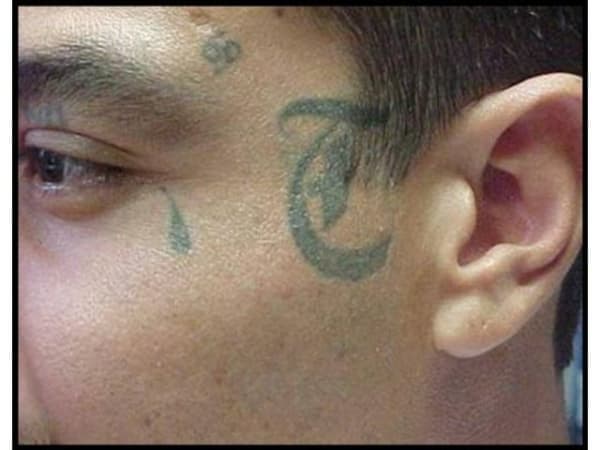
An example of a filled-in teardrop tattoo.
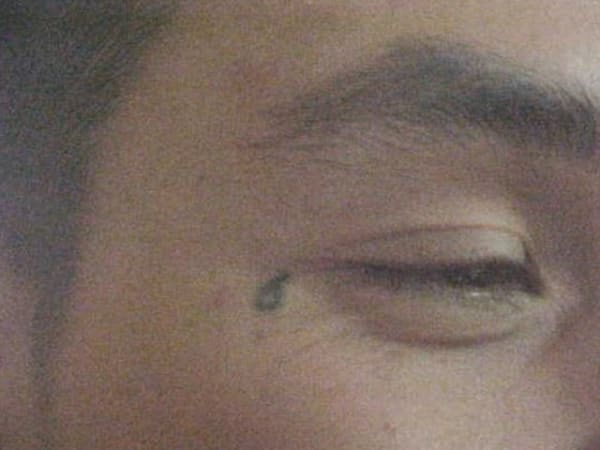
An example of an outlined or open-teardrop tattoo.
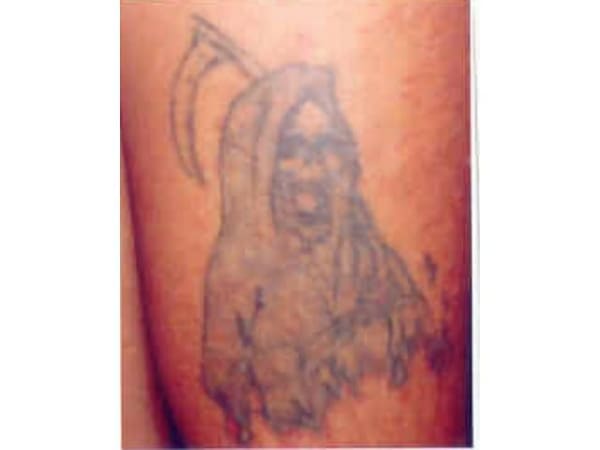
The Grim Reaper in this tattoo is making a gang hand sign. The Angel of Death, Santisima Muerte, and the Grim Reaper are common symbols used by gang members from many different types of gangs.
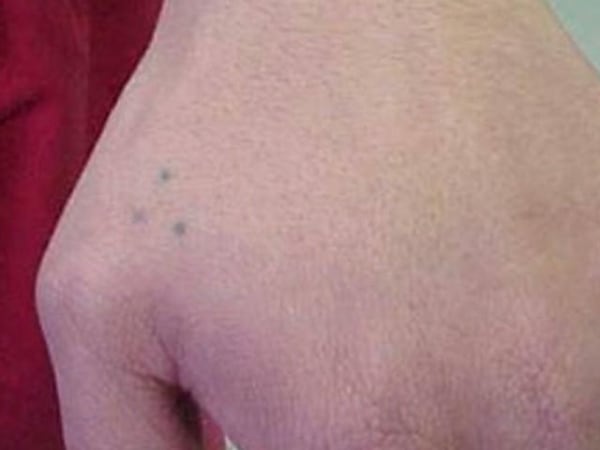
Originally a single-dot tattoo was called a "bust mark" for being "busted" or arrested. Three bust marks marked a "three-time looser" or career criminal. Often it was associated with drug use and needle marks and therefore called "mi vida loca" or "my crazy life" (of crime). A modern interpretation of this might be "my thug life."
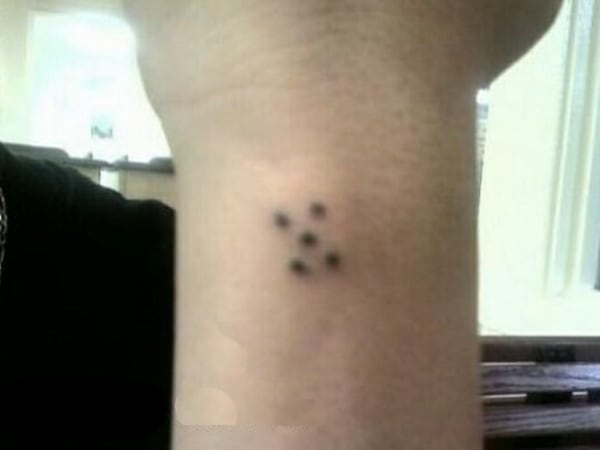
A set of five dots arranged like the face on a die can signify “criminal for life” or membership in a Crips gang.
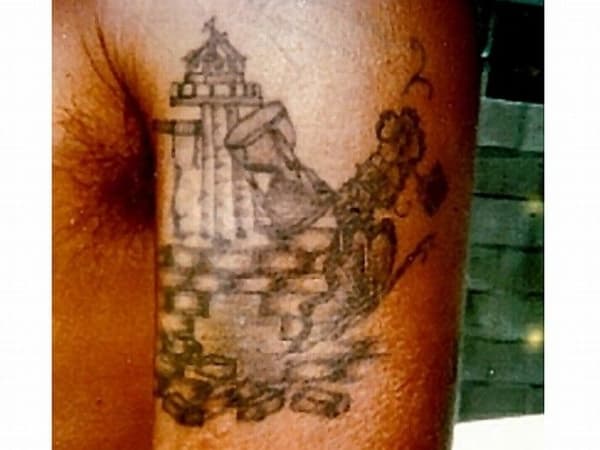
This tattoo of a prison tower, hour glass, and prisoner breaking out of the prison wall signifies this person has done prison time.
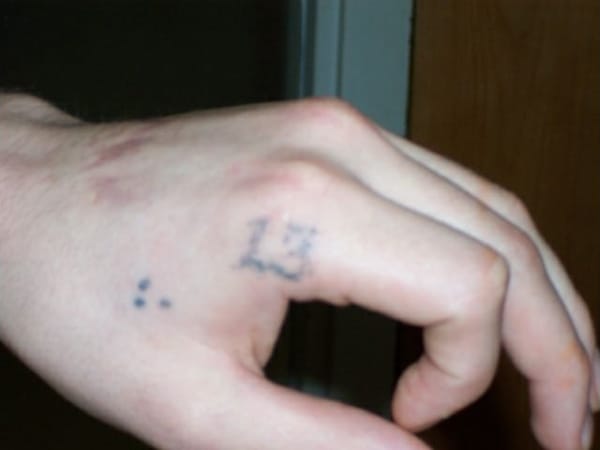
This hand shows both the "mi vida loca" tattoo and the 13 indicating association with the Southern California Surenos and the Mexican Mafia.
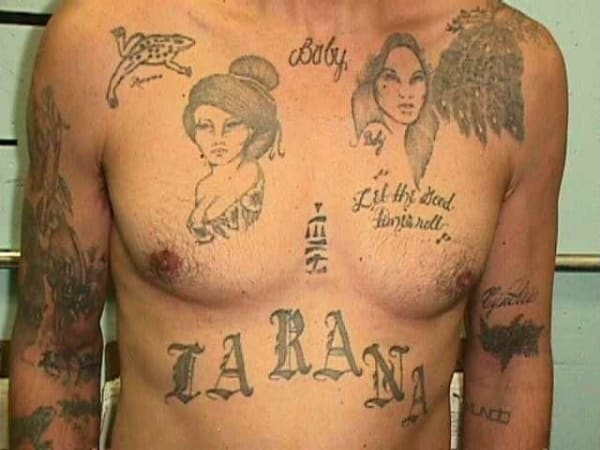
The wearer of these tattoos is one of the Infamous Grajeda family members from the La Rana (the Frog) gang and the Mexican Mafia. A simplified version of Chinese characters for "trust no man" are centered on his chest.
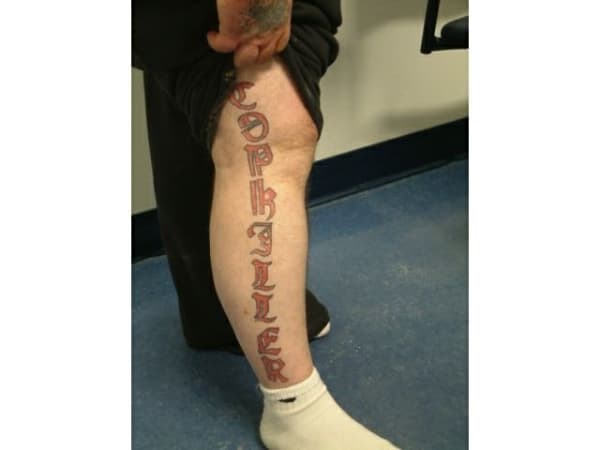
This inmate is boasting a stylized lettered tattoo bragging "Cop Killer." It's placement is odd, because if he really wanted it to be seen, it wouldn't be on a leg (normally covered by clothing), in colored ink (prison tattoos are almost exclusively done in black ink), and in a difficult-to-read style. It may be a store-bought tattoo that was done before he was arrested.
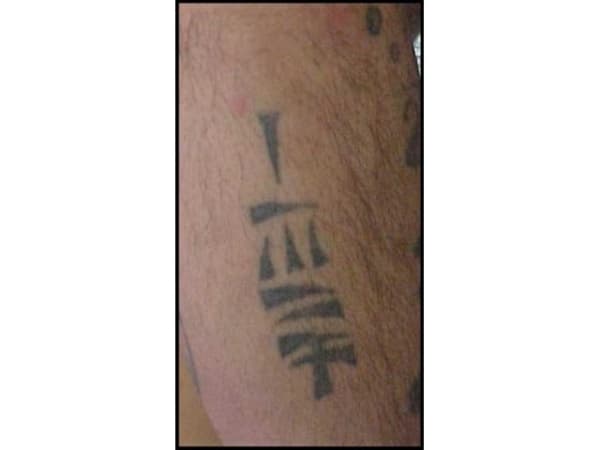
There are many versions of this tattoo using several variations of simplified Chinese characters. Gang members claim that it says "trust no man," or "trust no bitch," but many don't read Chinese. They apparently must take the word of the tattoo artist.
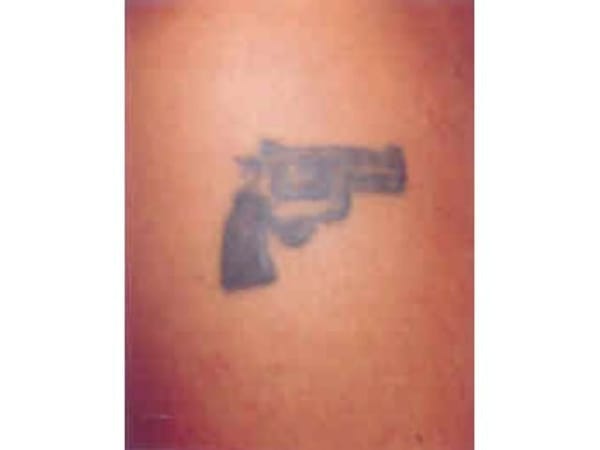
Like skulls, demons and wild animals, the depiction of a handgun on a gang member generally is used to enhance the intimidation factor. Some gang members who have taken up a career as a "stick-up man" or armed robber will tattoo this symbol of their trade. The Texas prison gang "Los Hermanos Pistoleros" ("Brotherhood of Gunmen" or LHP) uses the pistol as their symbol. Several of them have a realistic-looking pistol permanently tattooed on their waistline. Officers have referred to this as the "please shoot me" tattoo.
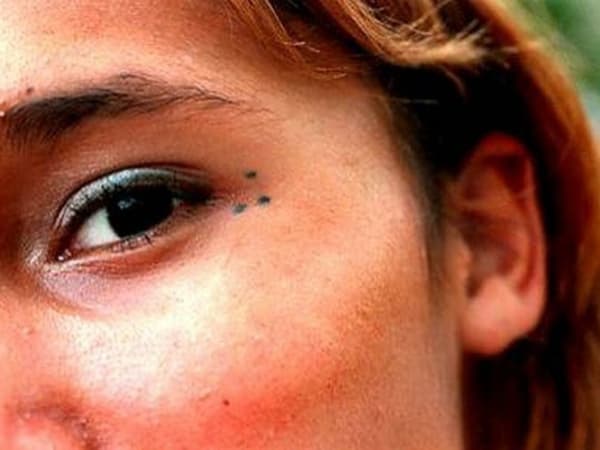
The three dots can be worn anywhere, but they become more significant when brazenly displayed on the face of a gang member.
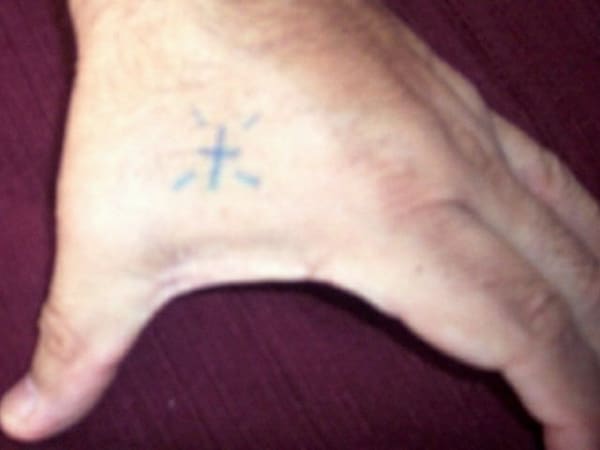
The Pachuco Cross evolved in the 1940's from the "t" for "ept" (El Paso Tip, a.k.a., the Texas Tip) gang. It was commonly worn on the web of the left hand by young Mexican American Pachuco gang members. A gang member wearing it today might be 80 years old.
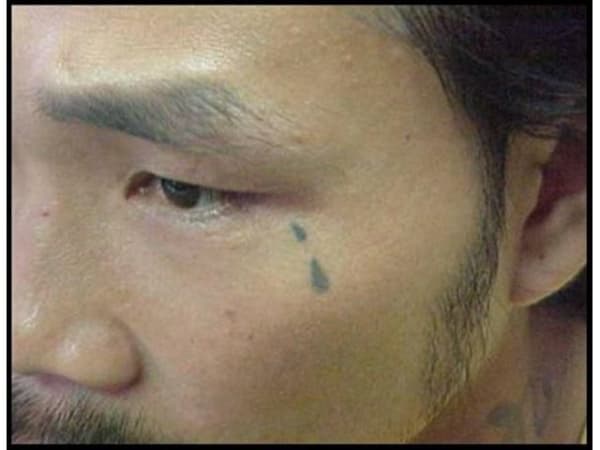
Gang members have numerous explanations for the teardrop tattoo. It likely began in the 1950s in the California Youth Authority (CYA) and was tattooed as an outline to indicate one year in custody. When the teardrop was filled in, it indicated five years in custody. Later, gang members used it to memorialize a murdered homeboy and when the homeboy was avenged it was colored in. More recently, it has become just another gang decoration.

